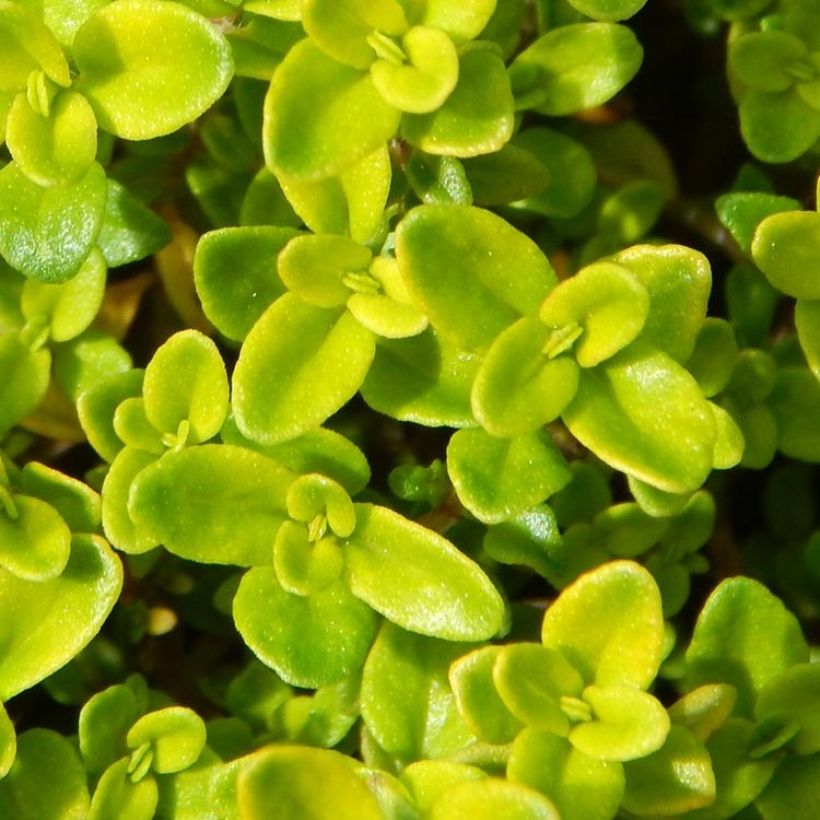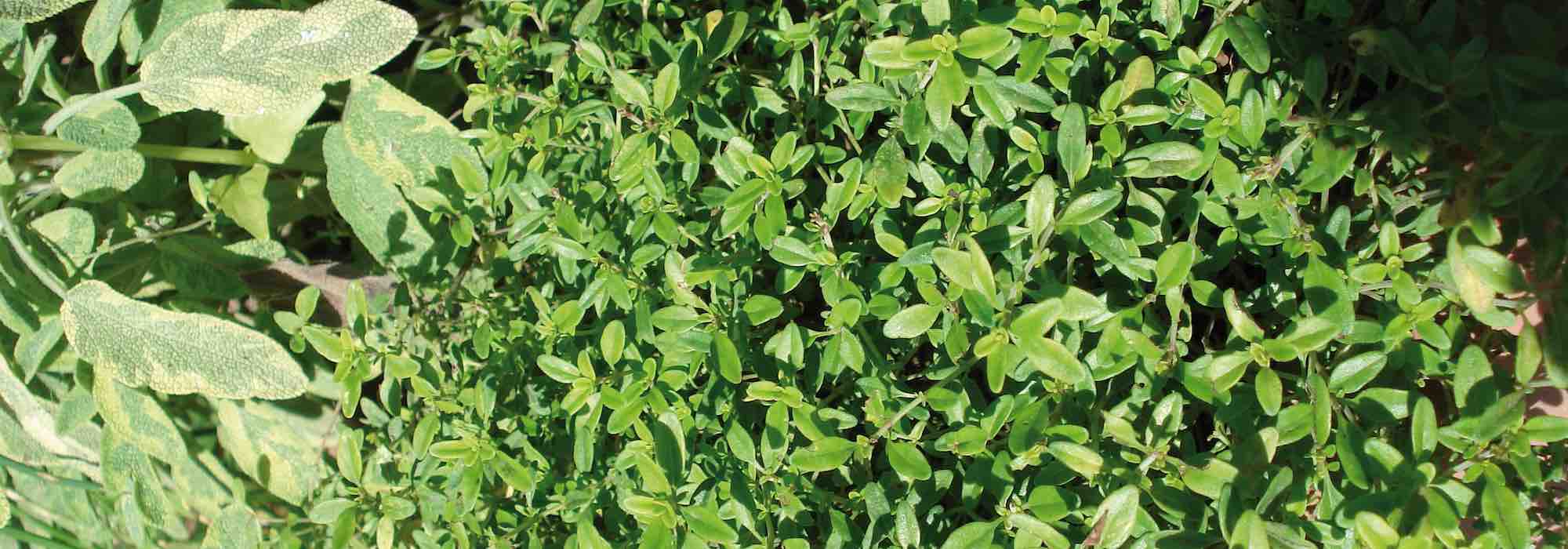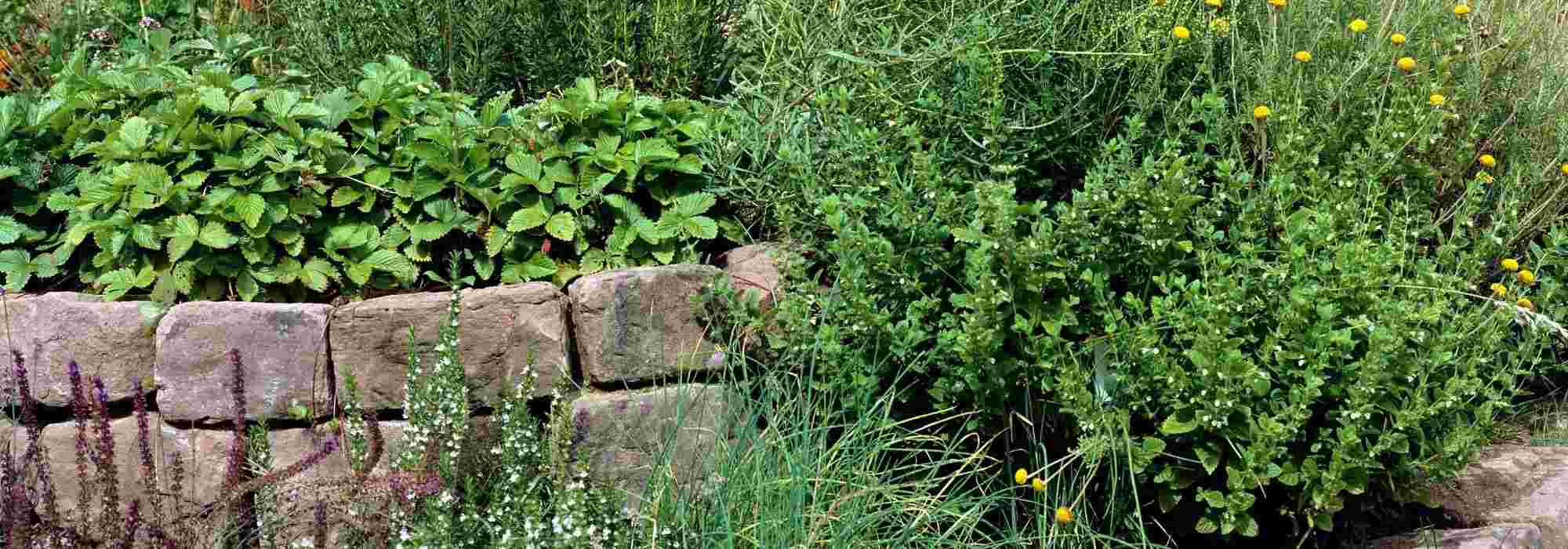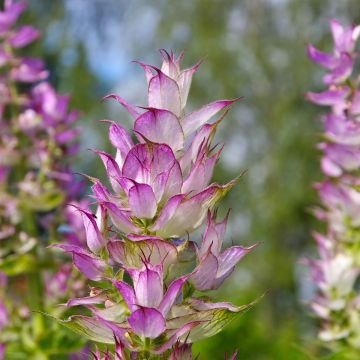

Thym doré - Thymus vulgaris Gold en plant


Thym doré - Thymus vulgaris Gold en plant
Thymus vulgaris Golden - Golden Thyme
Thymus vulgaris Gold
Common Thyme, Garden Thyme, English Thyme
jolis plants vigoureux, bien emballés, qui ont donné de suite des signes de bonne reprise.
Mireille, 20/03/2023
Special offer!
Receive a €20 voucher for any order over €90 (excluding delivery costs, credit notes, and plastic-free options)!
1- Add your favorite plants to your cart.
2- Once you have reached €90, confirm your order (you can even choose the delivery date!).
3- As soon as your order is shipped, you will receive an email containing your voucher code, valid for 3 months (90 days).
Your voucher is unique and can only be used once, for any order with a minimum value of €20, excluding delivery costs.
Can be combined with other current offers, non-divisible and non-refundable.
Home or relay delivery (depending on size and destination)
Schedule delivery date,
and select date in basket
This plant carries a 6 months recovery warranty
More information
We guarantee the quality of our plants for a full growing cycle, and will replace at our expense any plant that fails to recover under normal climatic and planting conditions.
Description
This Golden Thyme, known as Thymus vulgaris 'Gold' in Latin, is a rather compact variety of common thyme that stands out for its green-gold foliage. This shrub forms a beautiful ball adorned with small white-pink and highly nectar-bearing flowers in spring or summer. Its highly aromatic leaves combine well with those of Bay, Rosemary, and Parsley to create a perfect bouquet garni. It will perfume slow-cooked dishes, sauces, or can be used in infusions to treat digestive disorders. Common Thyme, a Mediterranean plant, is more sensitive to humidity than to cold. It thrives in limestone, rocky, and poor soils, as well as summer drought. It should be planted in full sun in a rockery, at the edge of a flowerbed, or in a pot for easy access.
Native to western and southern Europe, where it can be found naturally in scree slopes and garrigues, Common Thyme is an undershrub belonging to the Lamiaceae family. It forms small fragrant clumps with evergreen foliage. This honey-producing plant bears small flowers in summer, ranging in colour from white to mauve-pink depending on the variety. This 'Gold' variety forms a beautiful cushion measuring 20-30 cm (8-12in) in all directions, covered with tiny leaves that vary in colour from green-yellow to gold depending on the season. Its flowering is almost white.
Thyme is a hardy and easy-to-grow herb that thrives in poor, light, or even rocky and well-drained soils. If your soil is rather moist and clayey, we recommend growing it in a pot where it will thrive.
Harvest: Thyme can be harvested throughout the year because its leaves are evergreen. Preferably pick in the morning. Thyme is most fragrant during its flowering period in summer. Since it is necessary to prune it to maintain a beautiful compact shape, take the opportunity to stock up for the winter months!
Storage: Thyme is traditionally preserved by drying. After washing and drying the stems, hang the bouquets upside down in a dry and well-ventilated place. This is a simple and quick process that you can replace with freezing if you find it more convenient.
Gardener's tip: In the garden, don't hesitate to mix different types of plants by placing some herbs like Thyme in the middle of your perennial flower beds or in rockeries, along with lavender, creeping rosemary, or oregano. They will integrate perfectly and the often strong scents of aromatic plants are known to repel insects that may attack more sensitive plants, such as certain roses.
Thymus vulgaris Golden - Golden Thyme in pictures




Harvest
Plant habit
Foliage
Planting and care
Common Thyme is a hardy and easy-to-grow aromatic herb that thrives in poor, light, even rocky and well-drained soil. It has good hardiness when planted in rocky soil that doesn't retain water. Once established, common thyme is very drought-tolerant in summer. If your soil is rather moist and clayey, we recommend growing it in a pot where it will thrive. Planting plug plants should be done in spring (March - April) in cold regions or at the end of summer (August - September) in warmer regions.
In the ground: Space the plants 25 cm (10in) apart in all directions. Dig a hole, add well-rotted compost, position the plug plant and cover with soil. Firm and water lightly.
In a pot: Place a layer of gravel or clay pellets at the bottom of the pot to facilitate drainage. Fill the pot with a mixture of potting soil and garden soil. Insert the plug plant very delicately, cover with soil and firm well. Water lightly. Place your pot in the sun.
Thyme does not tolerate excessive humidity: in the ground, it will no longer need to be watered once it has taken root. The drier the soil, the more fragrant the plant will be. For pot cultivation, do not let water stagnate in the saucer and water moderately, allowing the growing medium to dry out a bit between waterings.
An annual pruning (on the wood of the year) will maintain a nice rounded and compact habit.
Thyme can be propagated by dividing clumps or by propagation through cuttings in summer. This operation is recommended after a few years, especially in cold and humid climates.
Cultivation
Care
Intended location
Planting & care advice
-
, onOrder confirmed
Reply from on Promesse de fleurs
Similar products
Haven't found what you were looking for?
Hardiness is the lowest winter temperature a plant can endure without suffering serious damage or even dying. However, hardiness is affected by location (a sheltered area, such as a patio), protection (winter cover) and soil type (hardiness is improved by well-drained soil).

Photo Sharing Terms & Conditions
In order to encourage gardeners to interact and share their experiences, Promesse de fleurs offers various media enabling content to be uploaded onto its Site - in particular via the ‘Photo sharing’ module.
The User agrees to refrain from:
- Posting any content that is illegal, prejudicial, insulting, racist, inciteful to hatred, revisionist, contrary to public decency, that infringes on privacy or on the privacy rights of third parties, in particular the publicity rights of persons and goods, intellectual property rights, or the right to privacy.
- Submitting content on behalf of a third party;
- Impersonate the identity of a third party and/or publish any personal information about a third party;
In general, the User undertakes to refrain from any unethical behaviour.
All Content (in particular text, comments, files, images, photos, videos, creative works, etc.), which may be subject to property or intellectual property rights, image or other private rights, shall remain the property of the User, subject to the limited rights granted by the terms of the licence granted by Promesse de fleurs as stated below. Users are at liberty to publish or not to publish such Content on the Site, notably via the ‘Photo Sharing’ facility, and accept that this Content shall be made public and freely accessible, notably on the Internet.
Users further acknowledge, undertake to have ,and guarantee that they hold all necessary rights and permissions to publish such material on the Site, in particular with regard to the legislation in force pertaining to any privacy, property, intellectual property, image, or contractual rights, or rights of any other nature. By publishing such Content on the Site, Users acknowledge accepting full liability as publishers of the Content within the meaning of the law, and grant Promesse de fleurs, free of charge, an inclusive, worldwide licence for the said Content for the entire duration of its publication, including all reproduction, representation, up/downloading, displaying, performing, transmission, and storage rights.
Users also grant permission for their name to be linked to the Content and accept that this link may not always be made available.
By engaging in posting material, Users consent to their Content becoming automatically accessible on the Internet, in particular on other sites and/or blogs and/or web pages of the Promesse de fleurs site, including in particular social pages and the Promesse de fleurs catalogue.
Users may secure the removal of entrusted content free of charge by issuing a simple request via our contact form.
The flowering period indicated on our website applies to countries and regions located in USDA zone 8 (France, the United Kingdom, Ireland, the Netherlands, etc.)
It will vary according to where you live:
- In zones 9 to 10 (Italy, Spain, Greece, etc.), flowering will occur about 2 to 4 weeks earlier.
- In zones 6 to 7 (Germany, Poland, Slovenia, and lower mountainous regions), flowering will be delayed by 2 to 3 weeks.
- In zone 5 (Central Europe, Scandinavia), blooming will be delayed by 3 to 5 weeks.
In temperate climates, pruning of spring-flowering shrubs (forsythia, spireas, etc.) should be done just after flowering.
Pruning of summer-flowering shrubs (Indian Lilac, Perovskia, etc.) can be done in winter or spring.
In cold regions as well as with frost-sensitive plants, avoid pruning too early when severe frosts may still occur.
The planting period indicated on our website applies to countries and regions located in USDA zone 8 (France, United Kingdom, Ireland, Netherlands).
It will vary according to where you live:
- In Mediterranean zones (Marseille, Madrid, Milan, etc.), autumn and winter are the best planting periods.
- In continental zones (Strasbourg, Munich, Vienna, etc.), delay planting by 2 to 3 weeks in spring and bring it forward by 2 to 4 weeks in autumn.
- In mountainous regions (the Alps, Pyrenees, Carpathians, etc.), it is best to plant in late spring (May-June) or late summer (August-September).
The harvesting period indicated on our website applies to countries and regions in USDA zone 8 (France, England, Ireland, the Netherlands).
In colder areas (Scandinavia, Poland, Austria...) fruit and vegetable harvests are likely to be delayed by 3-4 weeks.
In warmer areas (Italy, Spain, Greece, etc.), harvesting will probably take place earlier, depending on weather conditions.
The sowing periods indicated on our website apply to countries and regions within USDA Zone 8 (France, UK, Ireland, Netherlands).
In colder areas (Scandinavia, Poland, Austria...), delay any outdoor sowing by 3-4 weeks, or sow under glass.
In warmer climes (Italy, Spain, Greece, etc.), bring outdoor sowing forward by a few weeks.



















































